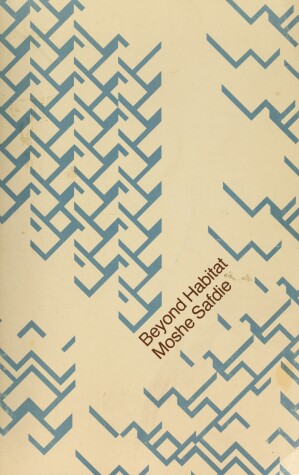When the apartment complex Habitat (Moshe Safdie, architect) appeared fully formed at Montreal's EXPO 67, it was greeted as a victory for humane values within the human jungle, an urbane solution to the housing crisis in the urban centers of the world. Wolf von Eckhardt wrote that it "answers a need so burning that it simply melts all the ifs and buts.... Safdie has dared a new answer to our urban housing problems.... Habitat may well constitute the first real victory of the modern industrial revolution." And "The Architects Journal" confirmed that it is "One of the most advanced housing projects ever conceived and certainly the boldest exercise in industrialized building methods attempted to date. [It] puts an end to the myth that industrialized building necessarily gives rise to an architecture of uniformity, monotony, drabness and soulless repetition.""Beyond Habitat" is a highly personal statement--almost a diary--covering the author's life and career before Habitat, his struggle to transform Habitat from a "design solution" on paper to a living reality, and his general ideas on housing and other matters since its completion. The book is illustrated with halftones of his buildings.Safdie's account of how Habitat came to life demonstrates dramatically that building housing appropriate to today's cities is much more than an architectural job--it's also a political one in getting a design approved at several levels of bureaucracy, and a technological one of getting it implemented through the use of mass-production techniques. Safdie's stunning success at EXPO 67 is thus based on his architectural originality, his tenacity as a political in-fighter, and his receptivity to new methods of industrial production.As for the future, an article in "Business Week" noted that if Safdie is to extend his housing revolution beyond Habitat, "He must persuade dozens of government officials, organize scores of disparate trades, sway a swarm of labor unions, and sell his ideas to thousands of apartment hunters--a skyscraping order from a young architect. But says one EXPO official, 'He just might do it. He got Habitat built--from politics to concrete when he was an unknown 26-year-old architect who had never designed a building of his own before.'"His book is a search for ways to embody these ideals in realistic and concrete form.
- ISBN10 0262190834
- ISBN13 9780262190831
- Publish Date 26 February 1971
- Publish Status Active
- Out of Print 11 July 2021
- Publish Country US
- Publisher MIT Press Ltd
- Imprint MIT Press
- Format Hardcover
- Pages 300
- Language English
